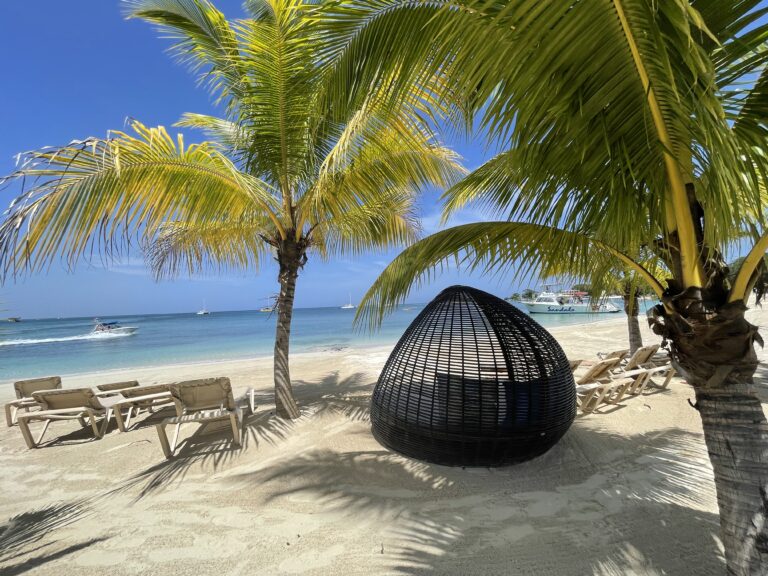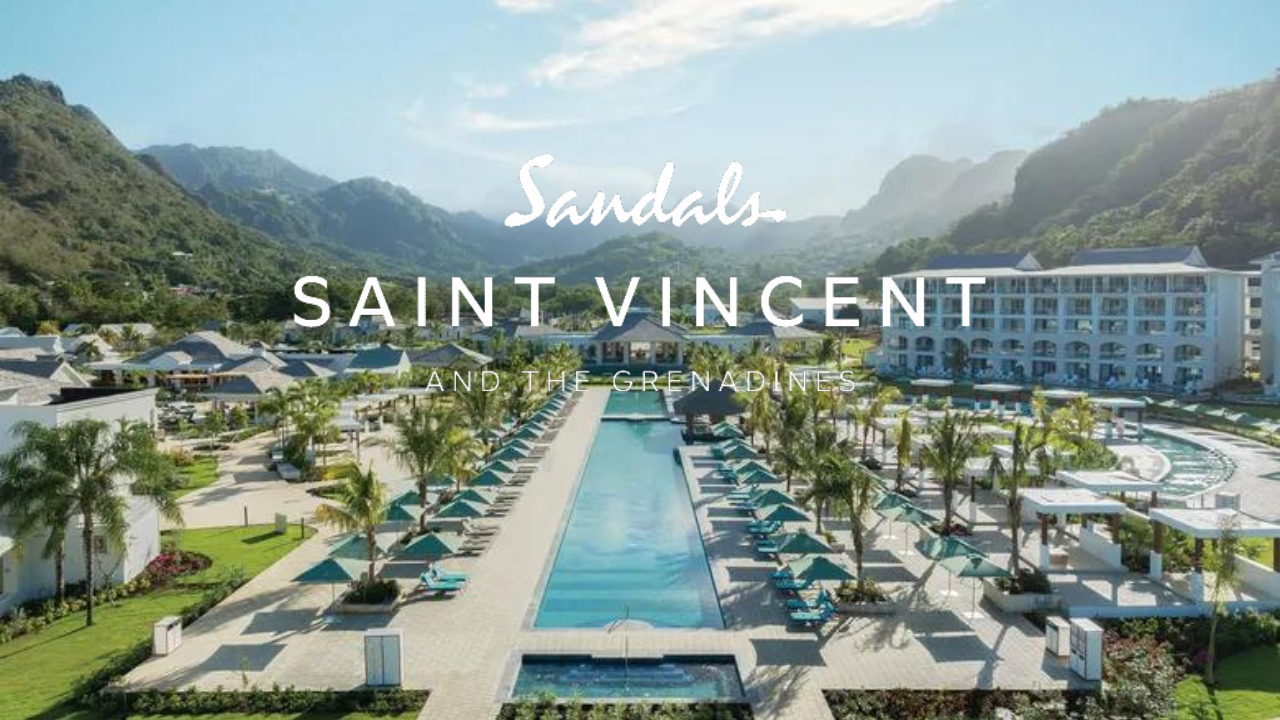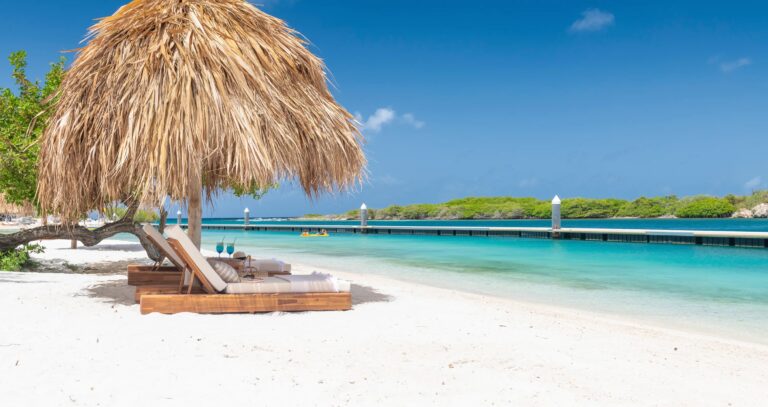Known as part of the ABC island chain (Aruba, Bonaire, Curacao), for years this former Dutch colony took a back seat to its rival islets.
Curacao is a curious place. Its Dutch colonial buildings painted in shades of yellow, orange and blue are reminiscent of Amsterdam, yet the dry climate, barren soil and cacti are more akin to the southwestern U.S. But Curacao's greatest natural beauty lies offshore—around the island's coral reefs, which are drawing an increasing number of divers and snorkelers.
Some of the things that set Curacao apart have little to do with tourism. With its unique buildings and natural harbor, the capital Willemstad became a UNESCO World Heritage site in 1997. The town is a big, bustling port (and the largest dry dock in the region). Huge ships sail right through downtown, and the Queen Emma Bridge creates a unique sight when it turns sideways to let them pass.
With a mixture of 55 different nationalities on the island, Curacao has a fascinating multicultural aspect. It also has a cosmopolitan character: The majority of residents speak at least four languages—English, Spanish, Dutch and their own Papiamento.
Must See or Do
Sights—Spelunking in the Hato Caves; scuba diving through the Mushroom Forest; exploring nature trails and caves at Christoffel National Park; touring the island's landhuisen, or plantation houses; exotic drink flavors at the Curacao Liqueur Distillery at Landhuis Chobolobo; Dutch heritage along the streets of Willemstad.
Museums—Curacao history at the Curacao Museum; slave history at the Kura Hulanda Museum; Jewish history at the oldest synagogue in the Western Hemisphere, Mikve Israel-Emanuel.
Memorable Meals—Authentic Curacao dishes, known locally as kriollo, at the Old Market food stalls; local flavors at Restaurant The Pen; enjoying the bounty of the sea at Fishalicious.
Late Night—Weekend beachfront dance parties at Mambo Beach; table games or slots at one of the island's casinos; a casual drink and a nice view of the sea at Waterfort Arches.
Walks—Discovering natural cures along a walk through Den Paradera; a stroll across the floating Queen Emma Bridge to Fort Amsterdam; a walking tour of Willemstad.
Especially for Kids—Feed the sharks at the Curacao Sea Aquarium; a motor tour of the Ostrich Farm.
Geography
Curacao's rolling hills are covered by thorny bushes and towering cacti. It is 38 mi/62 km long and between 2 and 7.5 mi/3 and 11 km wide. History
The largest and most developed of the ABC islands of Dutch heritage (the others are Aruba and Bonaire), Curacao was first inhabited by the Caiquetios, a branch of the Arawaks. The first European visitors were the Spanish in 1499, who didn't find any agricultural potential on the island and more or less ignored it.
The Dutch, recognizing the potential of its natural port, took Curacao in 1634, developing it into a mini-Holland. As the Dutch West India Company built up an important mercantile center, Curacao also became a Caribbean center for the slave trade from Africa.
There are as many legends about Curacao's name as there are nationalities. One claim is that it stems from the days when seamen ate only meat and bread and often died from scurvy, a disease caused by a deficiency of vitamin C. In the early 1500s, one captain marooned several very sick sailors on the island—not out of cruelty, but so they could die in peace. When the captain returned several months later, the sailors had fully recovered. They had eaten native limes, a good source of vitamin C. The captain, Amerigo Vespucci, promptly named the island Curacao—Portuguese for "the big cure."
A fascinating multicultural mix formed as Curacao grew: Portuguese Jews joined Africans, Arabs, Indians and Europeans of all nationalities. Today, the island is notable not only for its many ethnic groups and religions, but also for the easygoing tolerance and harmony of its people.
In 2011, this Caribbean sleeper won its independence from the Netherlands Antilles. The island is bustling with tourism, and cruise liners arrive along with snowbirds from northern climates in search of a taste of the Caribbean with a European flair and a distinct Latin-Caribbean vibe.
Snapshot
The island's main attractions include shopping, historic Dutch architecture, nightlife, diving and snorkeling, caves, swimming, the Sea Aquarium, casinos and restaurants.
Curacao is a good choice for veteran Caribbean visitors who want to do more than lie on the beach. Its distinctive culture and varied attractions make a pleasant mixture of things not often found together in the Caribbean. This hurricane-free location guarantees world-class diving and year-round sunshine.
Potpourri
A series of windmills on the northeast coast, propelled by Curacao's near-constant winds, helps to produce the island's electricity.
Be assured, locals are not calling you a donkey. They are saying danki, meaning "thank you" in Papiamento.
If you hear someone refer to a curioso, they are not being inquisitive: This Papiamento word refers to a traditional healer who uses herbs in their ministrations. Dinah Veeris, owner of Den Paradera, is the most famous curioso in Curacao.
Curacao deer have been residents of the island since long before the time of Columbus. Guided deer-watching tours are offered at Christoffel National Park. Reservations are required.
The green iguana, once an endangered species, is now being "ranched" for food and for pets. Considered a delicacy by locals, it is served in some restaurants.
Rainstorms are rare, but when they do occur the countryside breaks out in wildflowers that last a few days.
You're likely to see buildings in Willemstad that appear to be crumbling from the inside out. Known as "wall cancer," the problem is caused by the salt leaching out of the sea sand and stones that were used for building materials.
During coral spawning in September and October, divers can witness several types of coral, urchins and brittle stars releasing their eggs to be fertilized in the open waters around the reef.
Many of the best beaches are on the island's west side aptly named Westpunt.
Queen Juliana Bridge is the highest bridge in the Caribbean.
Location
Megaliners and larger ships dock at the updated Mega Pier, near Rif Fort at the tip of Otrobanda in Willemstad. Smaller cruise ships are able to enter the channel and dock at the Mathey Wharf in Santa Anna Bay at the Curacao Cruise Terminal.
The Mega Pier has an open-air terminal with some shops, phones, restrooms, a mail slot and tourist information. Taxis, rental cars and tour companies meet passengers there. About a three-minute walk away is the Renaissance Mall and Rif Fort, which offer a much larger choice of shops, cafes and facilities.
A pedestrian bridge connects Otrobanda ("the other side") to Punda ("the point"), or the east side of town where most of the tourist attractions and shops are located. It takes 10-15 minutes to walk from your ship across the bridge to Punda. The main office of the Curacao Tourist Development Bureau is in Punda, at Pietermaai 19 (phone 434-8200).
Shore Excursions
Typical tours in Curacao include diving and snorkeling excursions, as well as a trolley tour around Willemstad; a bus trek around the island to the Hato Caves and the plantation where Curacao liquor is distilled; and a dolphin-encounter experience.
Go shopping at the popular Punda area in the heart of Willemsted's commercial center packed with jewelry shops, knickknacks and duty free shops, then make a stop at the fun-filled Curacao Sea Aquarium Park.
In addition, passengers may choose an active off-road adventure by Land Rover, ATV or dune buggy. Those who prefer a water adventure can sign up for snorkeling, diving or a beach day with all sports equipment included. Some shore excursions are suitable for passengers with limited mobility and may include transportation by lift-equipped van.



































